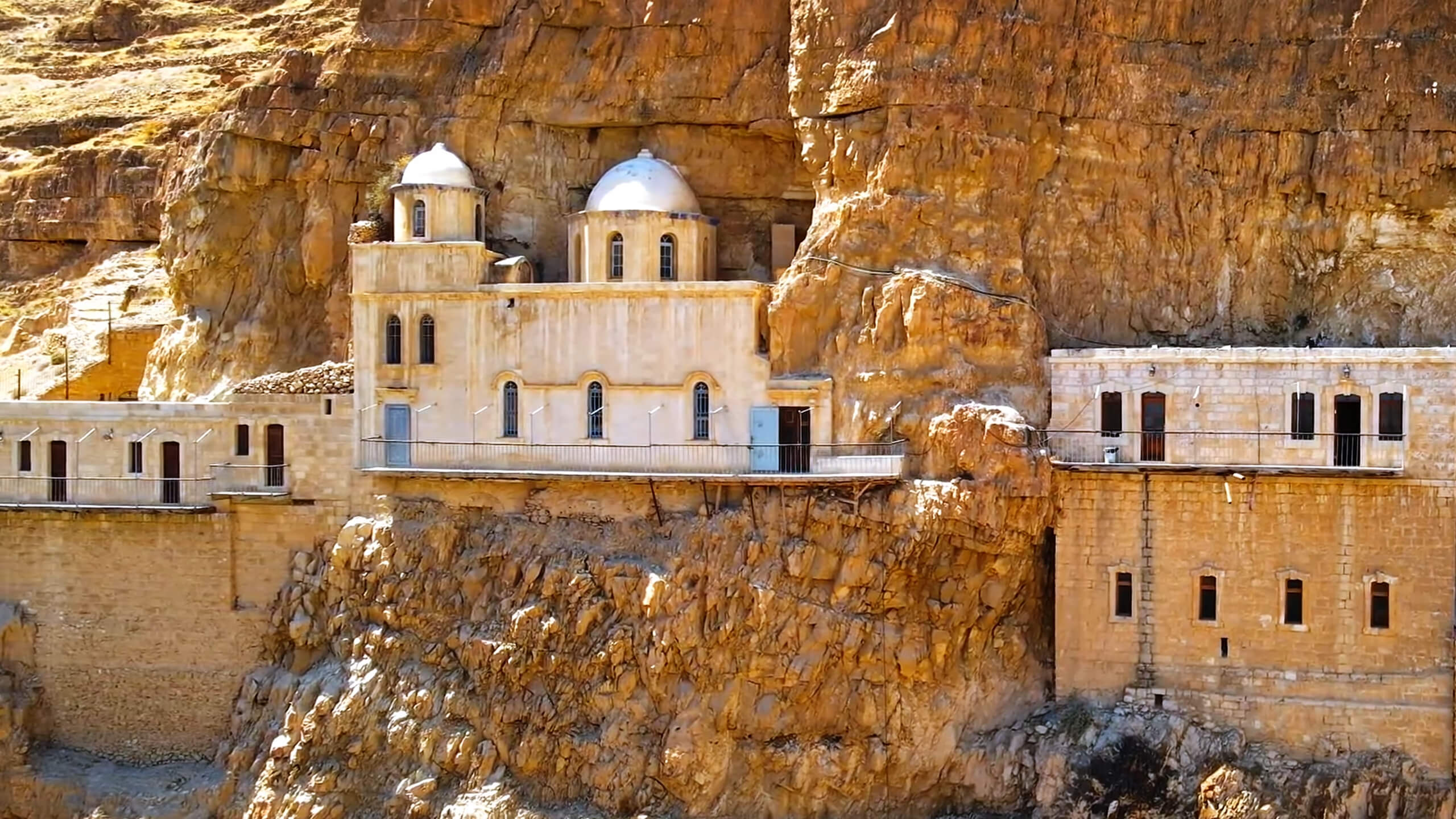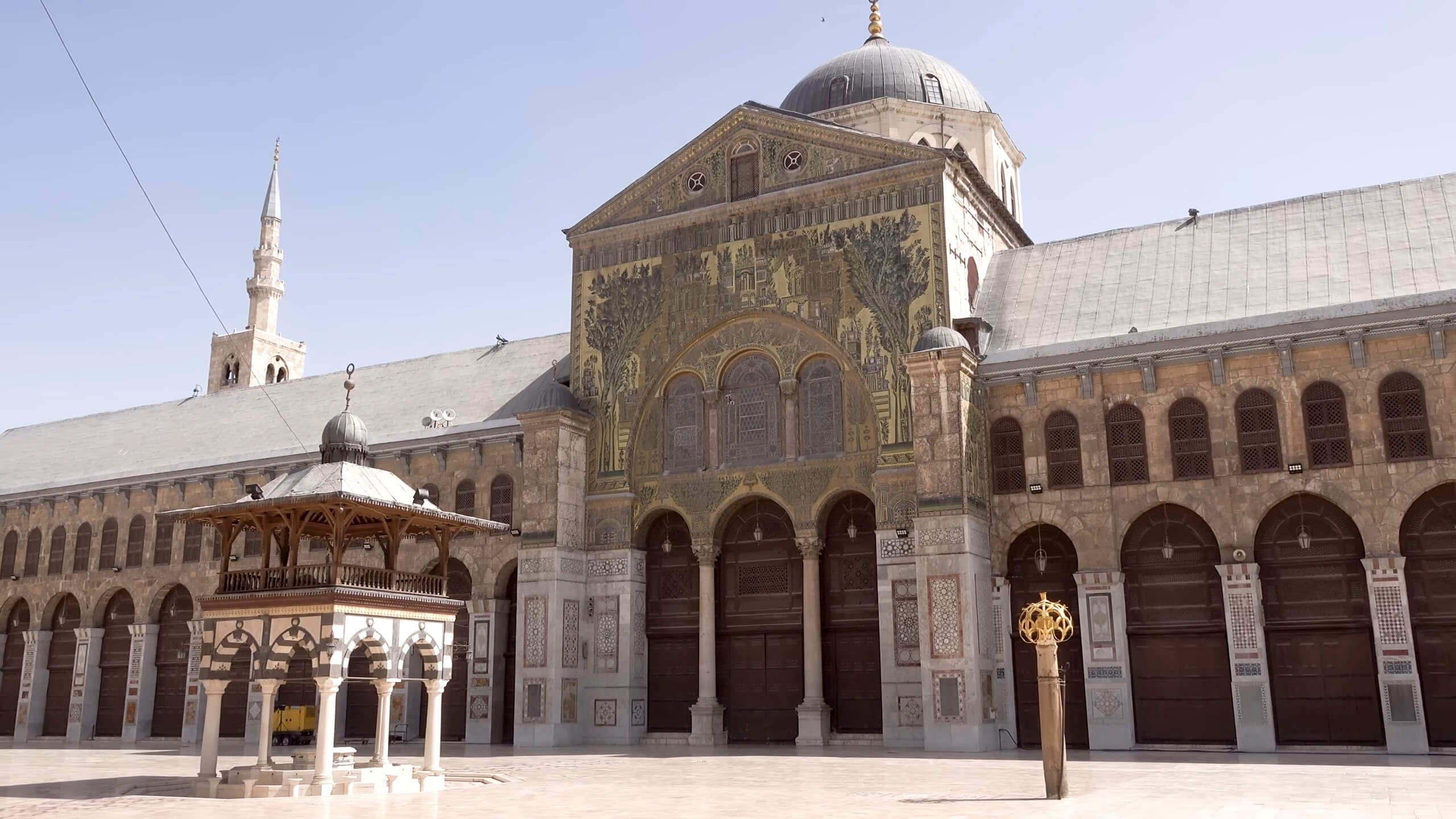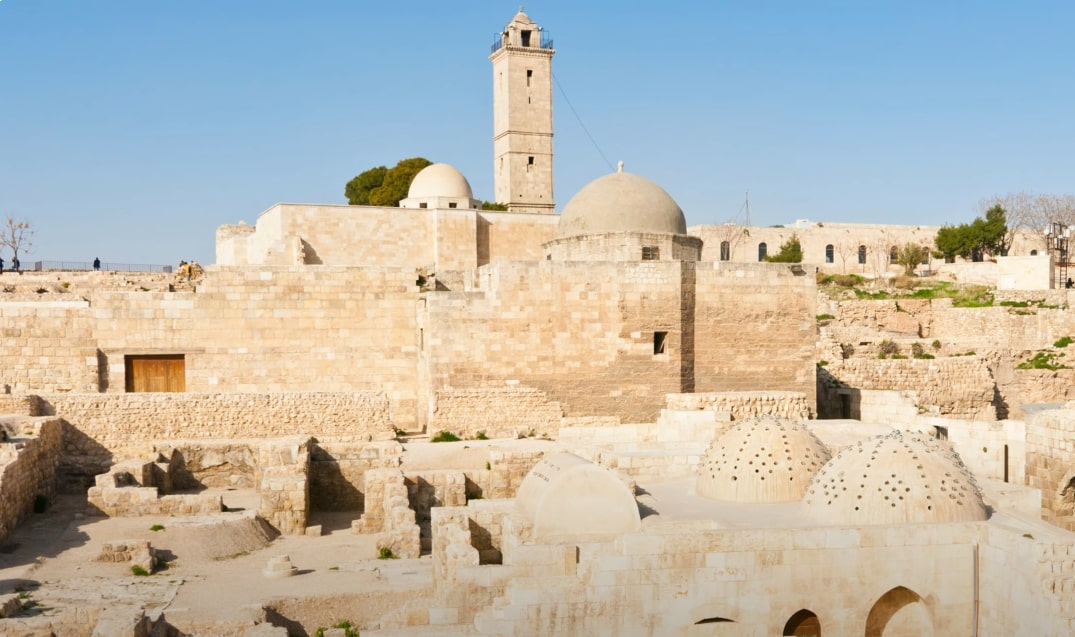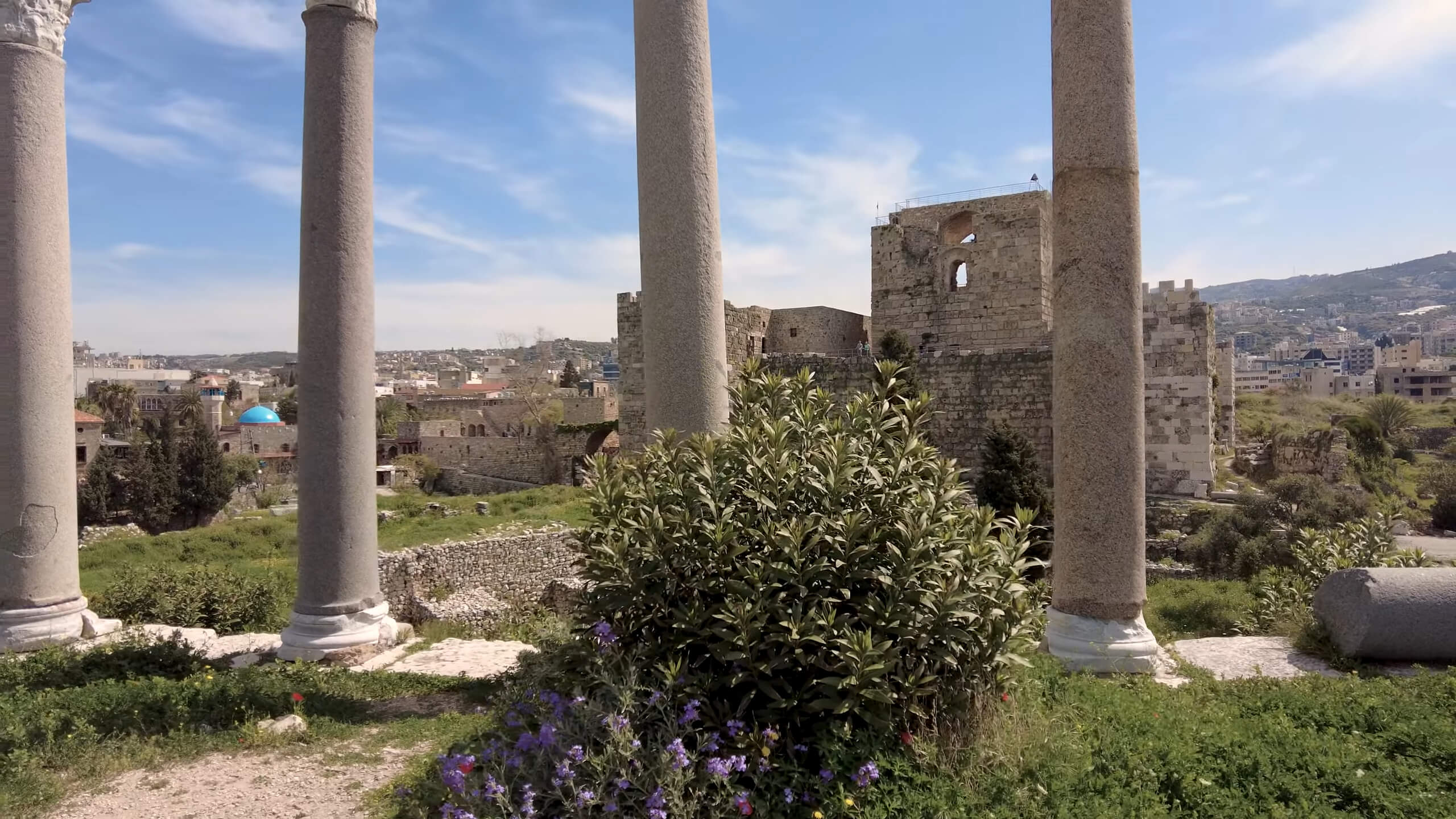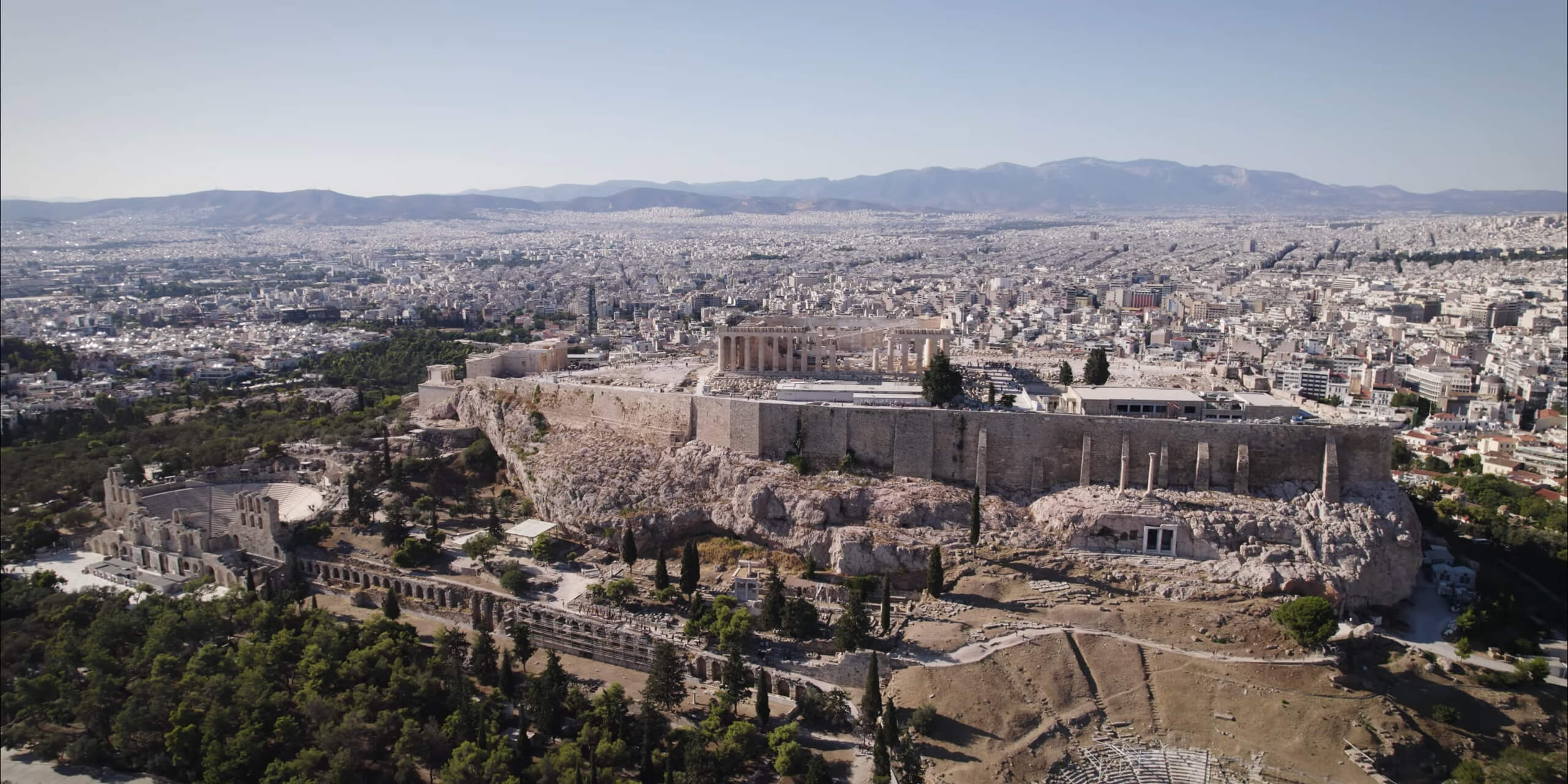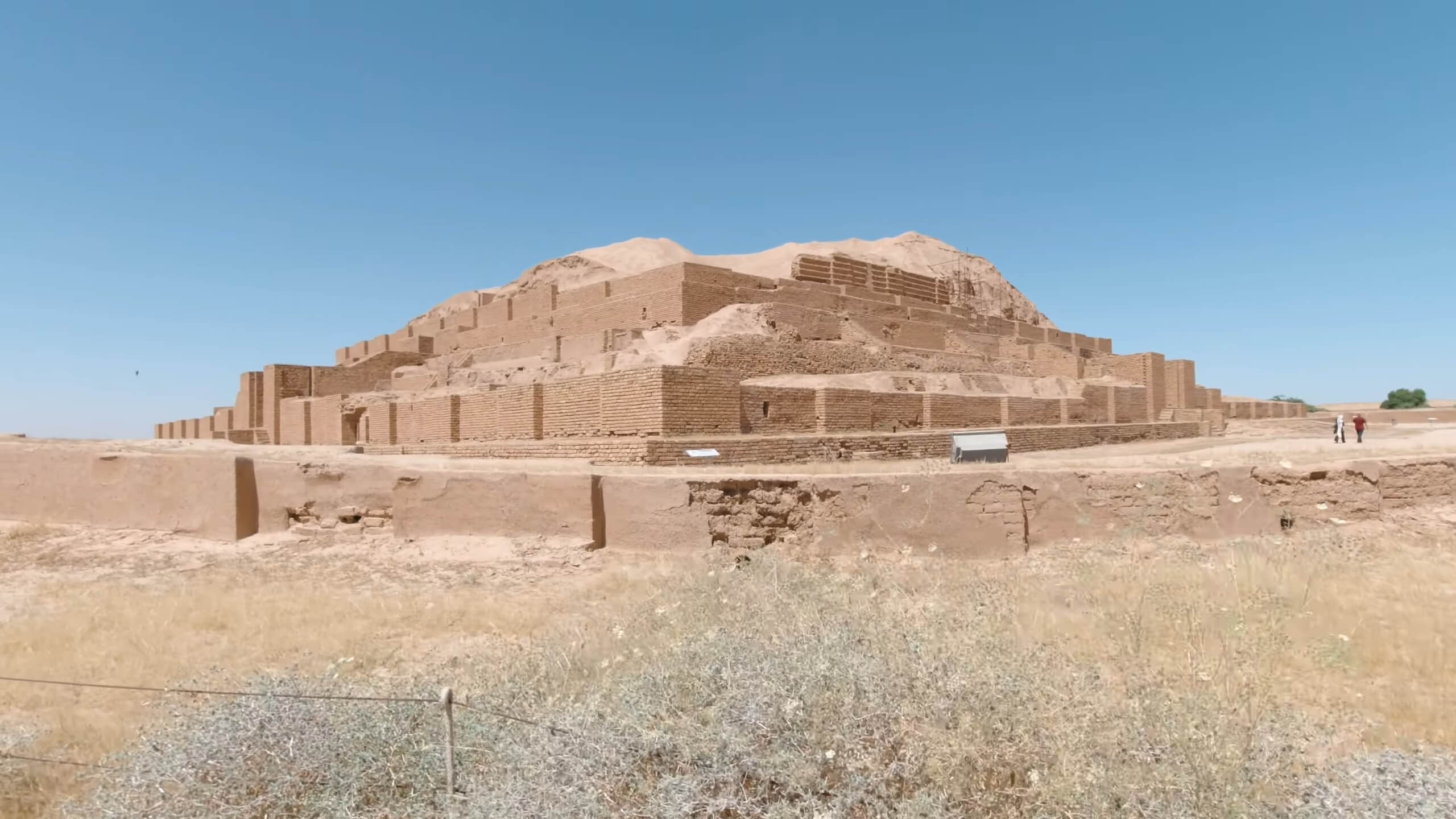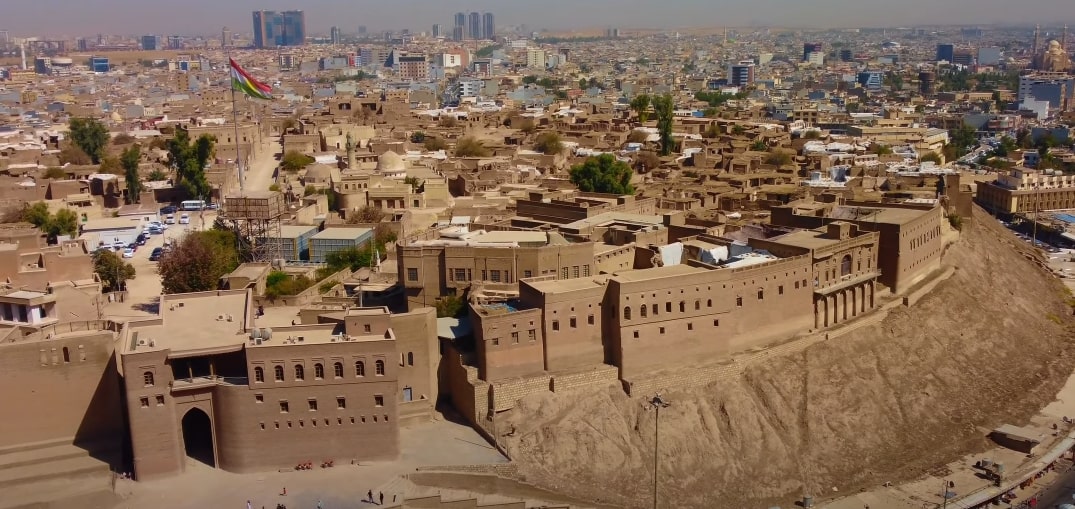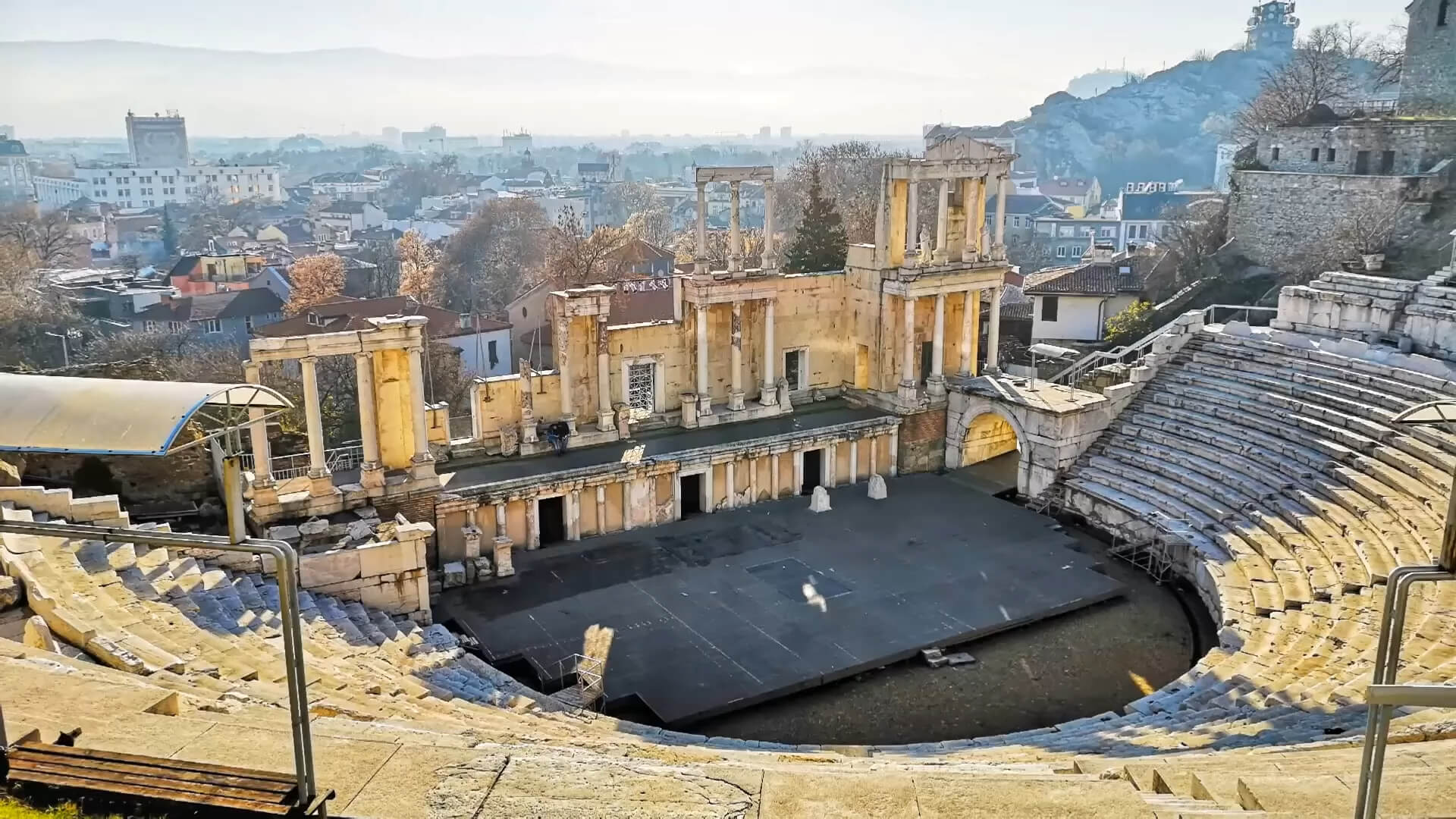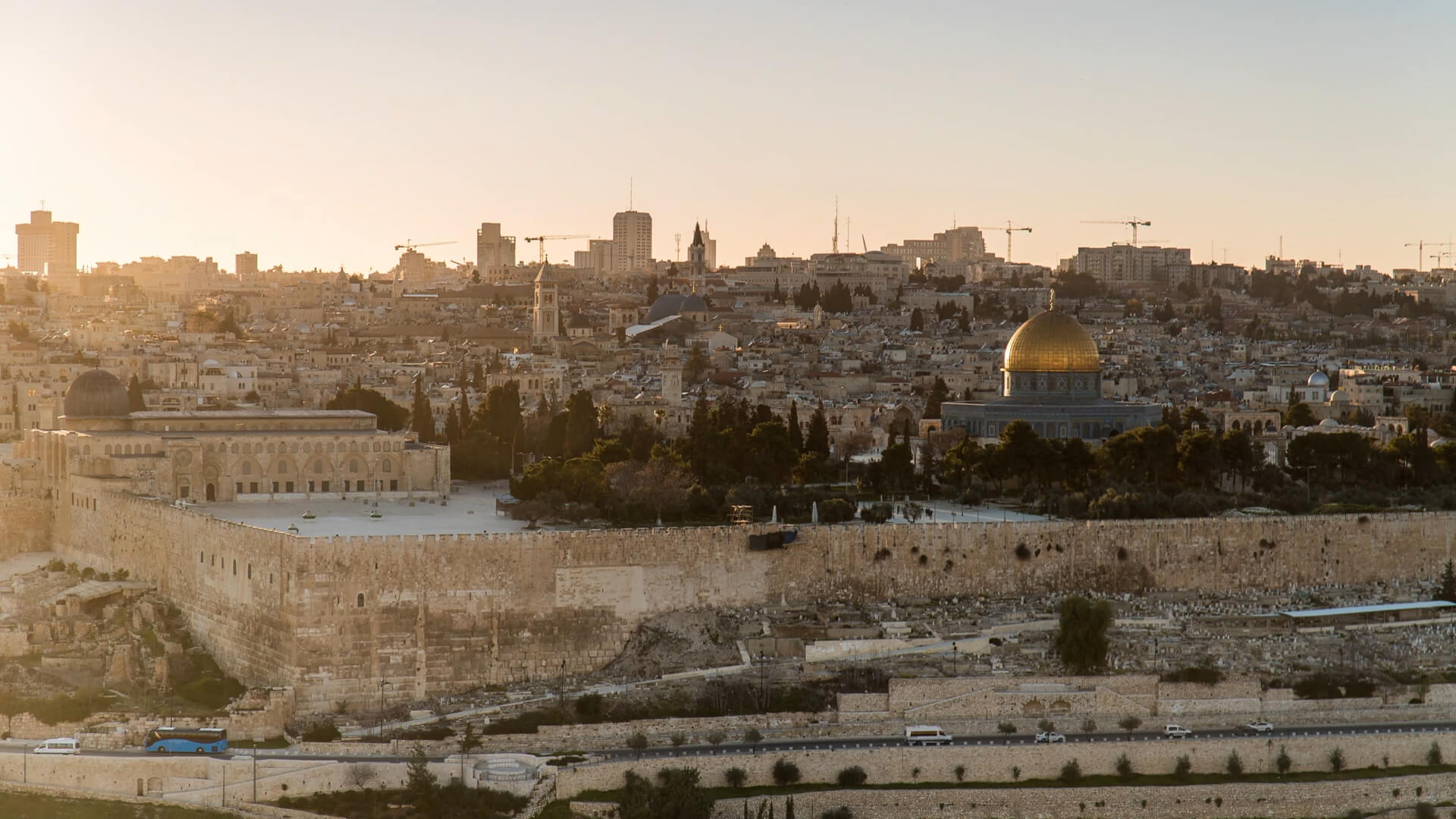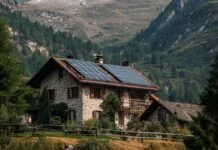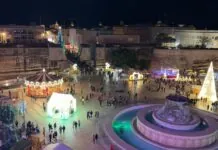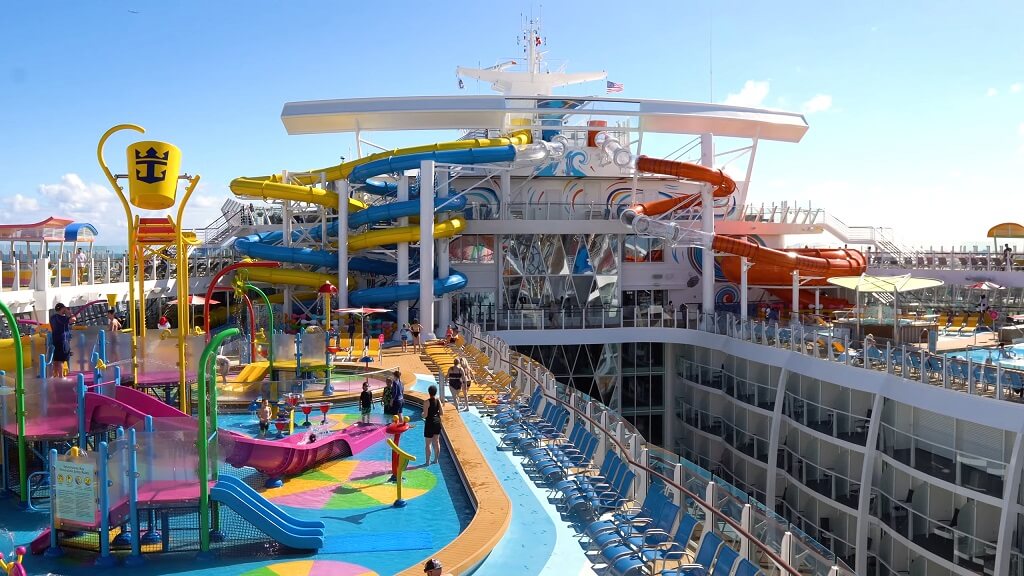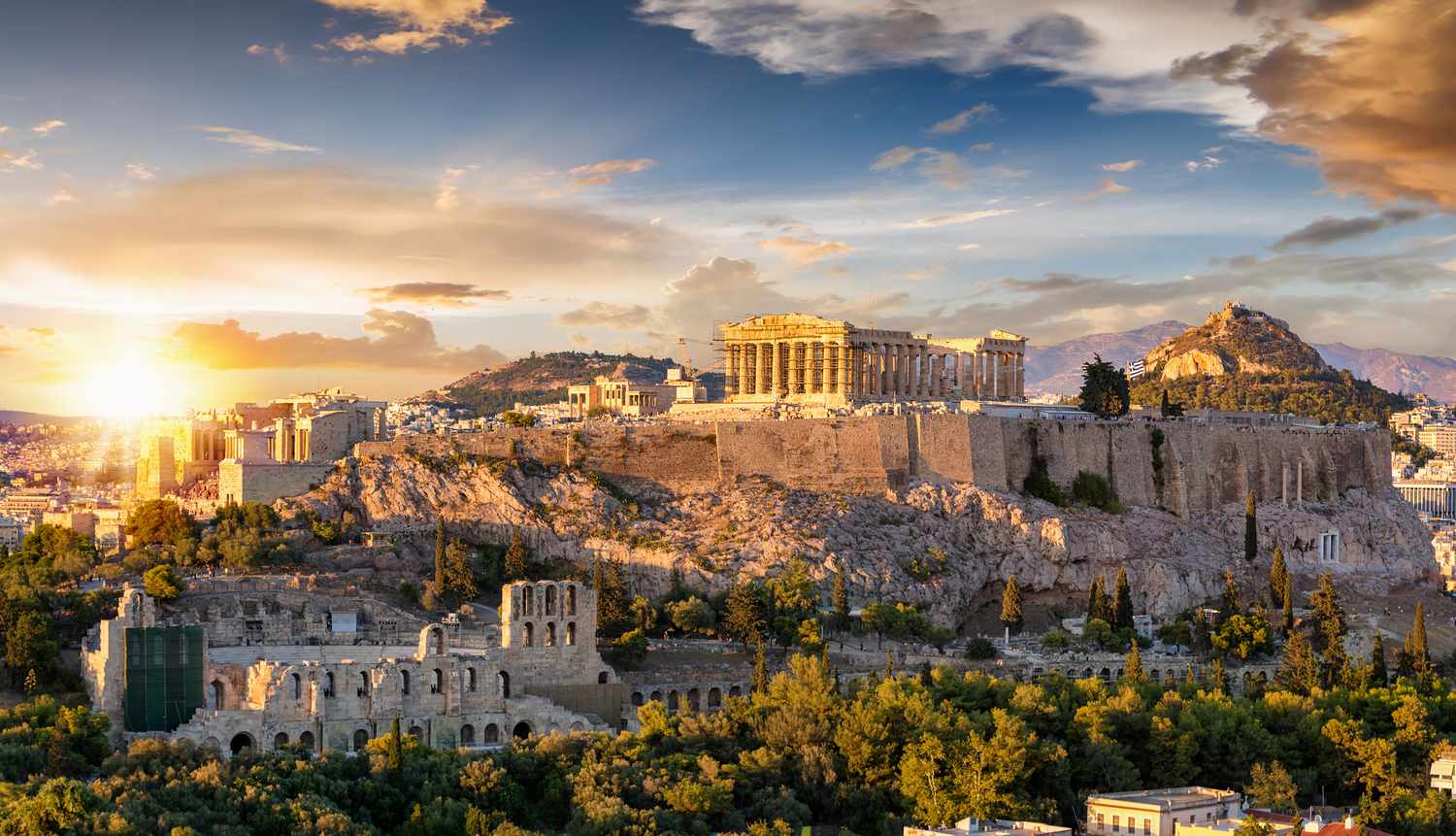
Oldest cities have been around for thousands of years, and they’re still full of life today. These places have seen ancient empires rise and fall, but they’ve stuck around, evolving over time.
In this article, we’ll look at some of the oldest cities that are still inhabited, each with a unique history that stretches back thousands of years.
- Jericho, West Bank – 11,000 years old
- Damascus, Syria – 11,000 years old
- Aleppo, Syria – 8,000 years old
- Byblos, Lebanon – 7,000 years old
- Athens, Greece – 7,000 years old
- Susa, Iran – 6,300 years old
- Erbil, Iraqi Kurdistan – 6,000 years old
- Sidon, Lebanon – 6,000 years old
- Plovdiv, Bulgaria – 6,000 years old
- Varanasi, India – 5,000 years old
- Luoyang, China – 4,000 years old
- Jerusalem, Israel/Palestine – 5,000 years old
1. Jericho, West Bank
| City Name | Jericho |
|---|---|
| Location | West Bank, Palestine |
| Inhabited Since | Around 9,000 BCE (11,000 years ago) |
| Population | Around 25,000 |
| Famous For | Oldest city in the world, ancient walls, biblical history |
| Key Attractions | Tell es-Sultan, Mount of Temptation, Hisham’s Palace, Ein es-Sultan spring |
Over its long history, Jericho has been ruled by various empires, including the Romans and the Ottomans.
In more recent times, it has been under Jordanian and Israeli control before being handed over to the Palestinian National Authority in 1994.
Despite this turbulent history, Jericho has remained a vital cultural and historical site in the region, making it a popular destination for tourists.
Fun Facts
- Oldest Stone Tower: Jericho is home to the oldest stone tower in the world, dating back to around 8,000 BCE.
- Biblical History: It is famously known as the city whose walls “came tumbling down” in the biblical story of Joshua.
- Ein es-Sultan Spring: Jericho is known for its natural springs, such as Ein es-Sultan, which has been a vital water source for thousands of years.
- Mount of Temptation: The mountain near Jericho is where Jesus is believed to have fasted for 40 days and nights.
Jericho offers visitors a unique opportunity to step into history, with archaeological sites such as Tell es-Sultan, which contains remains from some of the earliest human settlements. Y
ou can also explore the Mount of Temptation, either by foot or via cable car, and visit the Hisham’s Palace, a 1,300-year-old Umayyad palace.
Where to Stay in Jericho?
| Accommodation | Description |
|---|---|
| Auberg-Inn Guesthouse | A cozy, eco-friendly guesthouse near the Mount of Temptation, offering home-cooked meals and proximity to attractions like the Dead Sea. |
| Jericho Resort Village | Family-friendly resort with pools, lush gardens, and a relaxing ambiance, close to historical landmarks and the Jericho town center. |
| Dolphin Suites | A comfortable hotel with spacious rooms and amenities like a pool, providing easy access to Jericho’s local attractions. |
What to Eat in Jericho?
| Restaurant | Description |
|---|---|
| Green Valley Restaurant & Samar Cafe | A popular spot for Middle Eastern cuisine, offering dishes with locally sourced ingredients. |
| Temptation Restaurant | Located near the Mount of Temptation, this restaurant serves traditional Palestinian dishes and has stunning views of the surrounding landscape. |
| Limona | Known for its authentic Palestinian food and friendly service, Limona is a favorite among locals and tourists alike. |
2. Damascus, Syria
| City Name | Damascus |
|---|---|
| Location | Syria, Southwestern region |
| Inhabited Since | Around 9,000 BCE (11,000 years ago) |
| Population | Approximately 2.5 million (urban area) |
| Famous For | Oldest continuously inhabited city, capital of the Umayyad Caliphate |
| Key Attractions | Umayyad Mosque, Citadel of Damascus, Ancient City Walls |
Over millennia, it has been a central hub for various empires and cultures, from the Aramaeans to the Romans, Byzantines, and eventually the Umayyads.
The city became the capital of the Umayyad Caliphate in the 7th century, a period during which it rose to great prominence in the Islamic world.
One of the city’s most famous landmarks is the Umayyad Mosque, built on the site of a Roman temple and over an early Christian basilica.
Damascus Through the Ages
Damascus has been a battleground for control by numerous civilizations, including the Greeks, Romans, and Ottomans. Its old city is filled with ancient relics, from Roman walls to Islamic madrasas and palaces.
The Street Called Straight, mentioned in the Bible as where St. Paul converted to Christianity, still exists today, adding to the city’s religious significance for both Christianity and Islam.
Where to Stay in Damascus?
| Accommodation | Description |
|---|---|
| Beit Al Wali Hotel | A beautifully restored boutique hotel in the Old City, combining traditional Damascene architecture with modern amenities. |
| Beit Al Mamlouka | This historic hotel offers luxurious rooms set in an authentic 17th-century Damascene house, complete with courtyards and a rooftop terrace. |
| Cham Palace | A large, well-known hotel in central Damascus, offering comfortable rooms with views of the city and Mount Qasioun. |
What to Eat in Damascus?
| Restaurant | Description |
|---|---|
| Naranj | A must-visit for Syrian cuisine, Naranj is located in the historic Old City and serves dishes like stuffed vine leaves and kibbeh. |
| Chevalier Restaurant | A top French restaurant in Damascus, Chevalier has been serving high-quality dishes with classic decor since the 1970s. |
| Haretna Restaurant | This popular restaurant in the Old City offers a range of traditional Syrian dishes in a charming, historic setting. |
3. Aleppo, Syria
| City Name | Aleppo (Ḥalab) |
|---|---|
| Location | Northwestern Syria |
| Inhabited Since | Around 6,000 BCE (8,000 years ago) |
| Population | Approximately 2.1 million (as of 2021) |
| Famous For | Key Silk Road city, Ancient Citadel, UNESCO World Heritage Site |
| Key Attractions | Aleppo Citadel, Old City, Great Mosque of Aleppo |
The city has been a crossroads for many civilizations, from the Amorites in 3000 BCE to the Ottomans in more recent history.
The city’s Arabic name, Ḥalab, has ancient Semitic origins and was first mentioned in cuneiform tablets from Ebla and Mesopotamia. It was noted for its commercial and military significance as part of the Amorite state of Yamhad.
Throughout its long history, Aleppo has seen the rise and fall of many empires, including the Hittites, Assyrians, Persians, Romans, and Byzantines.
In recent years, Aleppo has faced significant challenges due to the ongoing Syrian Civil War, which caused massive destruction, especially to its historic Old City.
Safety Concerns for Travelers
Aleppo has been heavily impacted by the Syrian Civil War, leading to widespread destruction, particularly in the historic Old City. Although conflict levels have decreased since the peak of hostilities, the region remains vulnerable to sporadic violence, including shelling and clashes.
The security situation in Syria, and especially in Aleppo, is unpredictable. Shifting control among various factions and the presence of armed groups make it difficult to ensure safety for visitors.
4. Byblos, Lebanon
| City Name | Byblos (Jbeil) |
|---|---|
| Location | Lebanon, Mediterranean coast |
| Inhabited Since | Around 5,000 BCE (7,000 years ago) |
| Population | Around 40,000 |
| Famous For | Phoenician trading hub, UNESCO World Heritage site |
| Key Attractions | Crusader Castle, Phoenician Necropolis, Roman theater |
The city was a hub for many civilizations, and its ruins reflect the layered history of cultures that passed through.
Among the most notable finds are the remains of the Phoenician necropolis and Egyptian-style temples.
Influence of Many Empires
During the Hellenistic period, it became a prominent center for Greek culture, and many Greek structures still stand today, including a Roman theater and colonnaded streets.
Under the Roman Empire, the city continued to thrive, and large civic projects were built, some of which are still standing.
When the Crusaders arrived in the 12th century, they fortified the city with a massive Crusader castle that still dominates the skyline.
Byblos Today
Byblos is a place where ancient history meets modern life. The harbor is busy, the streets are full of life, and its deep historical roots attract people from all over the world.
Even with its age, the city remains a key part of Lebanese culture, balancing old traditions with modern conveniences, making it an awesome spot to visit in the Mediterranean.
Safety Concerns for Travelers
Since October 2023, cross-border exchanges between Hezbollah and Israel have escalated, with some clashes affecting areas well beyond southern Lebanon, even reaching parts of Beirut.
The U.S., Canada, and the U.K. have all issued Level 4 “Do Not Travel” advisories for Lebanon, recommending that citizens either avoid or depart the country while commercial flights are still available.
5. Athens, Greece
| City Name | Athens |
|---|---|
| Location | Greece, Attica region |
| Inhabited Since | Around 5,000 BCE (7,000 years ago) |
| Population | Over 3 million (metro area) |
| Famous For | Birthplace of democracy, ancient monuments |
| Key Attractions | Acropolis, Parthenon, Agora, Temple of Hephaestus |
Over the centuries, Athens grew into a powerhouse of art, philosophy, and culture, leading the world in intellectual thought during its Golden Age.
The Acropolis, home to the famous Parthenon, dominates the skyline and represents the heart of ancient Athens. This site, along with the Agora and other ruins, provides a direct link to the city’s long and rich history.
The Rise and Decline of Athens Through the Ages
Athens saw its peak during the Golden Age under the leadership of Pericles in the 5th century BCE.
It became the cultural, intellectual, and artistic hub of the world, with philosophers like Socrates and Plato shaping thought for centuries to come.
However, the city later fell under Roman and Byzantine rule, experiencing periods of decline and revival.
Despite being under Ottoman rule for nearly 400 years, Athens maintained its cultural identity, and after Greek independence in the 19th century, the city regained its status as the capital of Greece.
Modern Athens
The ancient ruins stand side by side with lively neighborhoods like Plaka and Monastiraki, where locals and tourists alike gather to experience Greek culture.
Despite its age, the city continues to thrive as a modern hub of culture and innovation, seamlessly mixing the past and present.
Athens is a city where you can stroll through ancient ruins, visit world-class museums, and then enjoy some of the best food and nightlife in the Mediterranean.
Where to Stay in Athens?
| Accommodation | Description |
|---|---|
| Plaka Neighborhood | The “Neighborhood of the Gods,” located just below the Acropolis. Plaka is a lively, historic area with neoclassical architecture and offers a range of accommodations from budget to luxury. |
| Syntagma Square | Known for its central location, Syntagma Square is ideal for those wanting a modern stay close to Athens’ cultural and political heart, with top shopping, dining, and historic sites nearby. |
What to Eat in Athens?
| Dish | Description |
|---|---|
| Keftedes | Greek meatballs made with a mix of herbs and spices, typically served with a side of tzatziki sauce for dipping. |
| Souvlaki | A popular Greek dish of skewered meat, often enjoyed directly off the skewer and paired with pita bread or fries. |
| Moussaka | A comforting casserole with layers of eggplant, potato, ground meat, and creamy béchamel sauce, offering a taste of classic Greek flavors. |
6. Susa, Iran
| City Name | Susa (Shush) |
|---|---|
| Location | Khuzestan Province, Iran |
| Inhabited Since | Around 4,200 BCE (6,300 years ago) |
| Population | Shush currently has around 65,000 residents |
| Famous For | Capital of the Elamite Empire, site of the Palace of Darius |
| Key Attractions | Ruins of the Apadana Palace, Tomb of Daniel, Tchogha Zanbil Ziggurat |
Susa was once the capital of the powerful Elamite Empire, which rose to prominence in the 4th millennium BCE. During the reign of Darius the Great in the Achaemenid Empire, the city was transformed into one of the most important cultural and political centers in Persia.
The Apadana Palace, constructed by Darius, stood as a symbol of the empire’s might, with its grand columns and intricate reliefs showcasing the diversity and power of the empire. Susa served as a major hub for trade and governance, and its strategic location made it central to many civilizations, including the Parthians and Sasanians.
Religious Significance and Ancient Legends
Susa holds a special place in many religious texts, including the Bible, where it’s referred to as Shushan. According to the Book of Esther, it was here that Queen Esther saved the Jewish people from persecution. The Tomb of Daniel, a major pilgrimage site, is located in Susa, drawing visitors from around the world.
The city also played a crucial role in the Hammurabi Code, as the Elamites famously took the stele from Babylon and brought it to Susa after conquering the region. The discovery of the stele during excavations highlights the city’s role as a major political and religious center throughout history.
Susa Today
Susa is a UNESCO World Heritage site, preserving its ancient ruins for visitors to explore. Among the highlights is Tchogha Zanbil, an impressive ziggurat that still stands, showing off the region’s architectural achievements from long ago.
Where to Stay in Susa?
| Accommodation | Description |
|---|---|
| Shush Castle Guesthouses | Located near the historic Shush Castle, this area offers a range of modest accommodations that allow travelers to immerse themselves in ancient Susa. |
| Susa Boutique Lodging | This boutique option provides a comfortable and unique stay in the heart of Susa, close to the ancient ruins and local markets. |
| Ahvaz Luxury Stay | Located in nearby Ahvaz, this hotel offers more amenities and luxury, ideal for travelers willing to stay outside Susa for enhanced comfort. |
What to Eat in Susa?
| Dish | Description |
|---|---|
| Ghalieh Mahi | A traditional fish stew from the Persian Gulf, flavored with tamarind and herbs, offering a taste of Khuzestan’s local cuisine. |
| Khoresht-e Khalal | A delicious Iranian stew made with almonds and beef, popular in the Khuzestan region. |
| Kookoo Sibzamini | A potato-based Persian frittata seasoned with spices, perfect as a quick snack or side dish. |
7. Erbil, Iraqi Kurdistan
| City Name | Erbil (Hawler) |
|---|---|
| Location | Kurdistan Region, Iraq |
| Inhabited Since | Around 6,000 BCE (6,000 years ago) |
| Population | 1.5 million (metro area) |
| Famous For | Ancient Citadel, UNESCO World Heritage site |
| Key Attractions | Erbil Citadel, Kurdish Textile Museum, Grand Bazaar |
At its core stands the Erbil Citadel, a massive ancient structure that has been home to various civilizations over the millennia, from the Sumerians to the Ottomans.
This citadel is a true archaeological treasure, with many of its secrets still hidden beneath layers of history. Excavations have revealed pottery and artifacts from the Chalcolithic period, linking the city to early Mesopotamian cultures.
The Citadel itself sits on a 100-foot-tall mound, the result of centuries of rebuilding and inhabiting the same area. This iconic site, now a UNESCO World Heritage location, has been the heart of the city for millennia.
It’s where the ancient city of Arbela once stood, and it’s known that Alexander the Great fought King Darius III nearby during the Battle of Gaugamela.
A Center of Trade and Culture
Throughout history, Erbil has been a bustling hub of trade and culture, acting as a strategic crossroads for various empires, including the Assyrians and Babylonians. Its position between key rivers and near the Zagros Mountains made it a vital stop for traders and armies alike.
Even today, the Grand Bazaar near the citadel is a lively place, filled with local goods, traditional Kurdish textiles, and food.
Travel Caution and Safety
While Erbil is safer than regions under the federal Iraqi government, security risks remain due to the proximity of conflict areas and the occasional spillover of regional tensions, particularly near the borders with Iran and Turkey.
The U.S., U.K., and Canadian governments recommend caution for travel to KRI and advise against unnecessary travel to other parts of Iraq due to risks of terrorism, kidnapping, and civil unrest.
There are occasional threats of rocket or drone attacks in areas near Erbil, especially given its location near regional flashpoints.
While these incidents are generally rare in the city center, travelers should remain updated on current events and adhere to any local advisories or restrictions.
8. Sidon, Lebanon
| City Name | Sidon (Saida) |
|---|---|
| Location | Lebanon, Mediterranean coast |
| Inhabited Since | Around 4,000 BCE (6,000 years ago) |
| Population | Around 80,000 |
| Famous For | Phoenician trade hub, production of purple dye |
| Key Attractions | Sea Castle, Old Souks, Sidon National Museum |
Sidon was a major player in the ancient Phoenician civilization, known for its expertise in maritime trade and shipbuilding.
One of Sidon’s claims to fame is its production of purple dye made from murex sea snails, a luxury item that was prized by royalty and nobility across the ancient world.
As a key Phoenician city-state, Sidon thrived through its extensive trade networks, stretching throughout the Mediterranean. Its history is filled with competition, especially with the nearby city of Tyre.
Sidon Through the Ages
Over the centuries, Sidon has been ruled by several empires, including the Egyptians, Assyrians, Persians, Romans, and Ottomans.
The city’s significance in the ancient world is evident from its many archaeological sites, including Phoenician sarcophagi and Roman-era temples.
One of the most striking features of Sidon is the Sea Castle, built by the Crusaders in the 13th century on a small island.
The Sidon National Museum offers a fascinating look at the city’s long history, with artifacts from the Phoenician era and beyond.
Travel Caution and Safety Advisory
Since late 2023, Israel and Hezbollah have been engaged in intermittent cross-border conflicts, impacting southern areas near Sidon.
These conflicts include airstrikes, artillery fire, and ground incursions, which pose significant risks for travelers in the region.
The U.K. and Australian governments advise avoiding travel to this country.
9. Plovdiv, Bulgaria
| City Name | Plovdiv |
|---|---|
| Location | Bulgaria, Thrace region |
| Inhabited Since | Around 6,000 BCE (6,000+ years ago) |
| Population | Over 350,000 |
| Famous For | Thracian origins, Roman ruins, and cultural events |
| Key Attractions | Roman Theater, Nebet Tepe, Old Town, Kapana District |
Initially settled by the Thracians, the city has gone through numerous transformations under different rulers, from the Romans to the Ottomans. One of the most well-known periods in its history is its time as Philippopolis, named after Philip II of Macedon, who conquered and rebuilt the city in 342 BCE.
The Romans later took control in 46 BCE, turning Plovdiv into a prosperous city in Thrace. Today, you can still see the Ancient Roman Theater, one of the best-preserved theaters in the world, which is still in use for concerts and performances.
Visitors can also explore the Roman Stadium, which once seated 30,000 spectators for sporting events.
Modern Vibes with Ancient Roots
Plovdiv is far from just an ancient city. It’s full of life and energy today. The Kapana District is a popular spot, packed with cafes, art galleries, and unique craft shops that locals and tourists love.
You can walk along Europe’s longest pedestrian street, which ties together the city’s history and modern vibe.
It’s got that perfect balance between old and new, where you can soak in the historic atmosphere while enjoying everything a lively, modern city has to offer.
Where to Stay in Plovdiv?
| Accommodation | Description |
|---|---|
| DoubleTree by Hilton Plovdiv Center | A modern hotel located centrally in Plovdiv, offering luxurious amenities and easy access to major sites like the Ancient Theatre. |
| Hotel Evmolpia | A charming boutique hotel in Plovdiv’s Old Town, known for its warm atmosphere and close proximity to historical landmarks. |
| Grand Hotel Plovdiv | Located near the Maritsa River, this hotel offers spacious rooms and a range of amenities, ideal for travelers looking for comfort and convenience. |
What to Eat in Plovdiv?
| Dish | Description |
|---|---|
| Banitsa | A traditional Bulgarian pastry filled with cheese, perfect for a quick breakfast or snack. |
| Kavarma | A hearty Bulgarian stew made with pork, vegetables, and spices, commonly found in local restaurants. |
| Shopska Salad | A refreshing salad with tomatoes, cucumbers, and grated Bulgarian cheese, known as a staple in Bulgarian cuisine. |
10. Varanasi, India
| City Name | Varanasi (Kashi or Banaras) |
|---|---|
| Location | Uttar Pradesh, India |
| Inhabited Since | Around 3,000 BCE (5,000 years ago) |
| Population | Over 1.4 million |
| Famous For | Spiritual significance, Ganges River, Ghats, Silk weaving |
| Key Attractions | Kashi Vishwanath Temple, Manikarnika Ghat, Sarnath |
The city is also known as Kashi, meaning “City of Light,” and is considered one of the holiest places for Hindus. Mark Twain once said, “Varanasi is older than history, older than tradition, even older than legend” because of its deep spiritual roots. The city is closely linked to Lord Shiva, and pilgrims flock here to take a dip in the Ganges River, which is believed to wash away sins.
For many, the Ganga Aarti (a prayer ceremony) held in the evening at the Dashashwamedh Ghat is an unforgettable experience, where priests chant, light lamps, and offer prayers to the river.
The area around Kashi Vishwanath Temple has been renovated, offering cleaner walkways and modern facilities while maintaining its historic charm. The Banaras Hindu University stands as a hub of learning and education, drawing students from all over the world.
Where to Stay in Varanasi?
| Accommodation | Description |
|---|---|
| BrijRama Palace | An iconic heritage hotel located along the Ganges, offering luxurious rooms and a traditional experience right by Dashashwamedh Ghat. |
| Hotel Dolphin International | A comfortable hotel close to the main ghats, providing budget-friendly rooms and easy access to Varanasi’s spiritual centers. |
| Taj Ganges, Varanasi | Located amid landscaped gardens, this luxury hotel offers upscale amenities and peaceful surroundings away from the bustling ghats. |
What to Eat in Varanasi?
| Dish | Description |
|---|---|
| Kachori Sabzi | A popular breakfast dish in Varanasi, consisting of deep-fried kachoris served with spicy potato curry. |
| Baati Chokha | A traditional North Indian dish made of baked dough balls served with roasted mashed eggplant and spiced potatoes. |
| Tamatar Chaat | A tangy and spicy chaat made with mashed tomatoes, spices, and topped with crunchy sev – a must-try street food in Varanasi. |
11. Luoyang, China
| City Name | Luoyang |
|---|---|
| Location | Henan Province, China |
| Inhabited Since | Around 2,000 BCE (4,000 years ago) |
| Population | Around 7 million |
| Famous For | One of China’s Four Great Ancient Capitals, Buddhist sites, Silk Road |
| Key Attractions | Longmen Grottoes, White Horse Temple, Old Town |
It served as the capital for 13 different dynasties, making it a key city in China’s history. Longmen Grottoes, filled with ancient stone carvings, are one of the city’s biggest attractions. This UNESCO World Heritage Site shows the deep Buddhist roots of the city.
A Center of Trade and Learning
Position along the Silk Road made it important for trade, and the city’s markets were always full of life. Its status as a center for education and culture grew during the rule of many dynasties.
The White Horse Temple, built during the Eastern Han period, is still one of the oldest Buddhist temples in China.
Where to Stay in Luoyang?
| Accommodation | Description |
|---|---|
| Christian’s Hotel | A highly-rated boutique hotel in Luoyang’s city center, known for its modern design and personalized service. |
| Holiday Inn Express Luoyang City Center | This international hotel offers comfort and convenience, with easy access to popular sites like the Longmen Grottoes. |
| Peony Plaza Hotel | Located near Wangcheng Park, Peony Plaza Hotel combines traditional Chinese decor with modern amenities. |
What to Eat in Luoyang?
| Dish | Description |
|---|---|
| Luoyang Water Banquet | A traditional meal with 24 unique dishes served in succession, known for its rich flavors and historical significance. |
| Hula Soup | A spicy and tangy soup made with flour, vermicelli, and vegetables, popular for breakfast in Luoyang. |
| Soybean Noodles | A simple yet flavorful noodle dish served with soybean milk, commonly enjoyed as a local specialty. |
12. Jerusalem, Israel/Palestine
| City Name | Jerusalem |
|---|---|
| Location | Israel/Palestine |
| Inhabited Since | Around 3,000 BCE (5,000 years ago) |
| Population | Close to 1 million |
| Famous For | Religious significance, ancient walled city |
| Key Attractions | Western Wall, Dome of the Rock, Church of the Holy Sepulchre |
Jerusalem is one of the most significant cities in the world, revered by Jews, Christians, and Muslims alike. Its history goes back over 5,000 years, and it’s been the center of many important religious events.
The population is split into different religious groups: 62% Jewish, 35% Muslim, and 2% Christian.
Religious Significance
- Western Wall: The holiest site in Judaism, the Western Wall is a surviving piece of the Second Temple destroyed in 70 CE
- Dome of the Rock: For Muslims, this is one of the most important shrines in the world, believed to be where Prophet Muhammad ascended to heaven
- Church of the Holy Sepulchre: Considered by Christians to be the site of Jesus Christ’s crucifixion and resurrection
The current layout of the Old City was largely shaped during the Ottoman period in the 16th century, though the city itself dates back to much earlier.
Jerusalem has been destroyed twice, besieged 23 times, and recaptured 44 times.
Travel Caution and Safety Advisory
Jerusalem is currently under heightened security due to ongoing regional conflicts, civil unrest, and the risk of terrorism. Governments, including those of the U.S., U.K., and Australia, strongly advise against non-essential travel to Jerusalem, Israel, and the Occupied Palestinian Territories due to the unpredictable and volatile security environment.
FAQs
How did people in Jericho access fresh water?
In Jericho, people relied on the Ein es-Sultan Spring, which has provided fresh water for thousands of years and remains one of the city’s most important natural resources.
What types of goods were traded in ancient Byblos?
Byblos was known for trading cedarwood, papyrus, and purple dye, which were highly valued by ancient Egyptians and Mediterranean civilizations.
How was Erbil connected to the rest of Mesopotamia?
Erbil was located on ancient trade routes that connected it to key cities like Nineveh and Babylon, making it a major trading hub in Mesopotamia.
Did Varanasi have any connection to ancient education?
Yes, Varanasi is home to Banaras Hindu University, one of the most prestigious learning centers in India, continuing its long tradition of education, especially in fields like Ayurveda and classical music.
Were the cities of Sidon and Tyre rivals in Phoenician times?
Yes, Sidon and Tyre were often in competition, especially in maritime trade, but both cities played crucial roles in the expansion of Phoenician influence throughout the Mediterranean.
Last Words
Throughout history, these ancient cities have witnessed the rise and fall of empires, adapting to the passage of time while maintaining their cultural significance. From Jericho’s ancient walls to the religious landmarks of Jerusalem, these cities offer a unique window into human civilization’s evolution.
Despite wars, invasions, and modernization, they continue to thrive, preserving their rich history and drawing millions of visitors each year.

